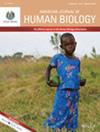Fertility Behavior in the Context of Polygyny in Pakistan With the Moderating Effect of Household Wealth Status Evidences From Demographic and Health Survey 2017–18
Abstract
Introduction
Fertility and population dynamics in Pakistan play a critical role in shaping the country's socio-economic development. High fertility rates contribute to rapid population growth and pose significant challenges to healthcare, education, and resource management. This study investigates the relationship between polygyny and fertility, with the moderating effect of household wealth status.
Method
The study utilizes data from the “Demographic and Health Survey 2017–18”. It implies zero-truncated negative binomial regression, interaction effect, marginal analysis, and propensity score matching techniques. The total number of samples size is 50 495 women including 48 699 belonging to polygynous and 1796 with monogamous families.
Results
Polygynous unions are generally associated with higher fertility rates than their monogamous counterparts, as indicated by an IRR of 1.03 (CI: 1.00–1.05). This finding is further supported by propensity score matching, controlling for household wealth status, education, husband's education, residency, and region. After accounting for these demographic factors, the analysis reveals that polygynous families, on average, have 14% more children than monogamous families. Additionally, the relationship between polygyny and fertility is influenced by household wealth status.
Conclusion
While the household wealth index typically shows a negative association with fertility, this pattern does not apply to polygynous families, where wealthier households tend to have more children than monogamous ones. This interaction between wealth and polygyny highlights a complex dynamic, suggesting that wealth amplifies fertility within polygynous unions, diverging from the general trend of declining fertility with increasing wealth.

 求助内容:
求助内容: 应助结果提醒方式:
应助结果提醒方式:


